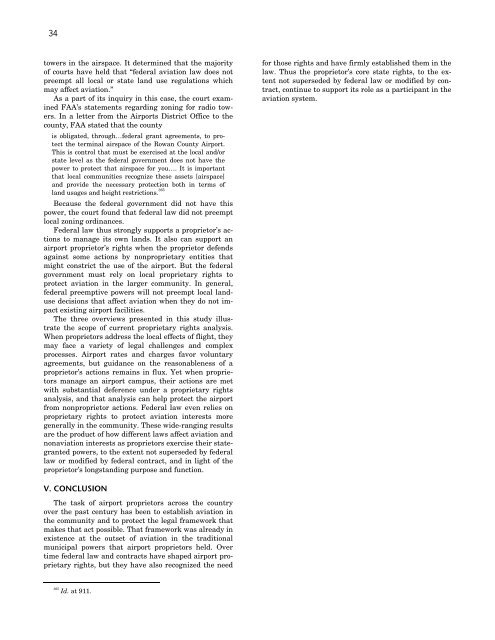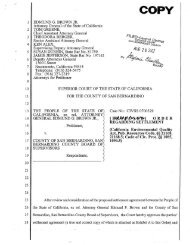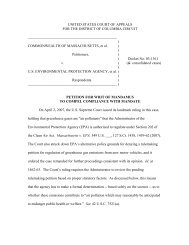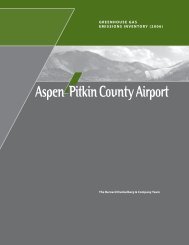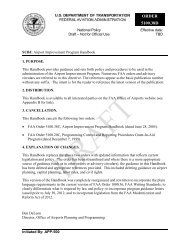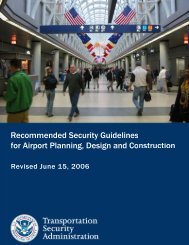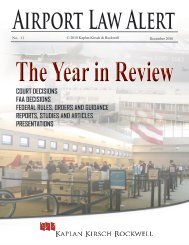ACRP Legal Research Digest 10
ACRP Legal Research Digest 10
ACRP Legal Research Digest 10
Create successful ePaper yourself
Turn your PDF publications into a flip-book with our unique Google optimized e-Paper software.
34<br />
towers in the airspace. It determined that the majority<br />
of courts have held that “federal aviation law does not<br />
preempt all local or state land use regulations which<br />
may affect aviation.”<br />
As a part of its inquiry in this case, the court examined<br />
FAA’s statements regarding zoning for radio towers.<br />
In a letter from the Airports District Office to the<br />
county, FAA stated that the county<br />
is obligated, through…federal grant agreements, to protect<br />
the terminal airspace of the Rowan County Airport.<br />
This is control that must be exercised at the local and/or<br />
state level as the federal government does not have the<br />
power to protect that airspace for you…. It is important<br />
that local communities recognize these assets [airspace]<br />
and provide the necessary protection both in terms of<br />
land usages and height restrictions. 365<br />
Because the federal government did not have this<br />
power, the court found that federal law did not preempt<br />
local zoning ordinances.<br />
Federal law thus strongly supports a proprietor’s actions<br />
to manage its own lands. It also can support an<br />
airport proprietor’s rights when the proprietor defends<br />
against some actions by nonproprietary entities that<br />
might constrict the use of the airport. But the federal<br />
government must rely on local proprietary rights to<br />
protect aviation in the larger community. In general,<br />
federal preemptive powers will not preempt local landuse<br />
decisions that affect aviation when they do not impact<br />
existing airport facilities.<br />
The three overviews presented in this study illustrate<br />
the scope of current proprietary rights analysis.<br />
When proprietors address the local effects of flight, they<br />
may face a variety of legal challenges and complex<br />
processes. Airport rates and charges favor voluntary<br />
agreements, but guidance on the reasonableness of a<br />
proprietor’s actions remains in flux. Yet when proprietors<br />
manage an airport campus, their actions are met<br />
with substantial deference under a proprietary rights<br />
analysis, and that analysis can help protect the airport<br />
from nonproprietor actions. Federal law even relies on<br />
proprietary rights to protect aviation interests more<br />
generally in the community. These wide-ranging results<br />
are the product of how different laws affect aviation and<br />
nonaviation interests as proprietors exercise their stategranted<br />
powers, to the extent not superseded by federal<br />
law or modified by federal contract, and in light of the<br />
proprietor’s longstanding purpose and function.<br />
for those rights and have firmly established them in the<br />
law. Thus the proprietor’s core state rights, to the extent<br />
not superseded by federal law or modified by contract,<br />
continue to support its role as a participant in the<br />
aviation system.<br />
V. CONCLUSION<br />
The task of airport proprietors across the country<br />
over the past century has been to establish aviation in<br />
the community and to protect the legal framework that<br />
makes that act possible. That framework was already in<br />
existence at the outset of aviation in the traditional<br />
municipal powers that airport proprietors held. Over<br />
time federal law and contracts have shaped airport proprietary<br />
rights, but they have also recognized the need<br />
365<br />
Id. at 911.


